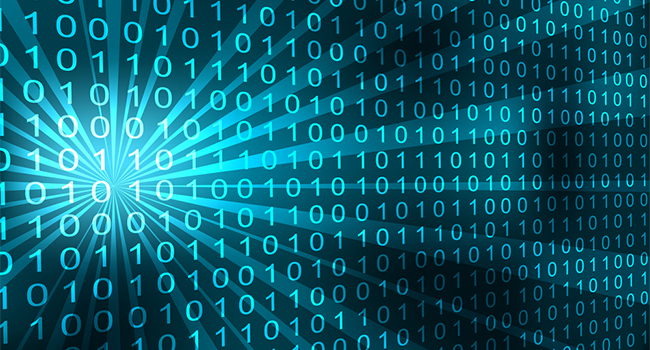Using computers, laptops, tablets and mobile phones concerns storing, retrieving and transferring information in an efficient way. Data is represented on modern storage media using the binary numeral system.
All data stored on storage media – whether that’s hard disk drives (HDDs), solid state drives (SSDs), external hard drives, USB flash drives, SD cards etc – can be converted to a string of bits, otherwise known as binary digits. These binary digits have a value of 1 or 0, and the strings can make up photos, documents, audio and video. A byte is the most common unit of storage and is equal to 8 bits.
All data in a computer is stored as a number. For example, letters become numbers; the Complete Works of Shakespeare is around 1250 pages in print, contains 40 million bits, with one byte per letter, totalling five megabytes (5MB). Photographs are converted to a set of numbers that indicate the location, colour and brightness of each pixel. Whereas convention numbers use ten digits (0, 1, 2, 3, 4, 5, 6, 7, 8, 9), binary numbers use two digits to represent all possible values. The conventions numbers 0-8 translate into binary numbers as: 0, 1, 10, 11, 100, 101, 110, 111 and 1000. With binary numbers, any value can be stored as a series of items which are either true (1) or false (0).
Binary data is primarily stored on the hard disk drive (HDD). The device is made up of a spinning disk (or disks) with magnetic coatings and heads that can both read and write information in the form of magnetic patterns. In addition to hard disk drives, floppy disks and tapes also store data magnetically. Newer laptops, as well as mobile phones, tablets, USB flash drives and SD cards, use solid state (or flash) storage. With this storage medium, the binary numbers are instead stored as a series of electrical charges within the NAND flash chips. Because all data is made up of a string of binary numbers, just one number out of place can cause a file to become corrupt.
